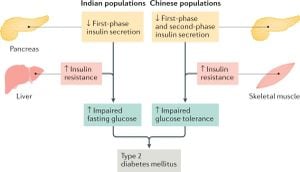Hurricane Milton, which recently roared onto Florida’s shores, has been described by meteorologists as one of the most dangerous storms to hit the state in decades. The forecast for this powerful hurricane, classified as Category 4 at one point, has kept emergency services and residents on high alert as the winds picked up speed and the threat of life-threatening storm surges loomed.
On the morning of October 9, 2024, Hurricane Milton officially made landfall as a Category 3 hurricane with winds reaching up to 120 mph near Siesta Key. The storm caused extensive damage across several Florida counties, with reports indicating rainfalls up to 12 inches and several tornadoes touched down during the storm's progression, claiming at least 23 lives.
Residents had braced themselves for the hurricane days prior, with mass evacuations taking place swiftly as more than 300,000 individuals were ordered to flee affected areas. Mandatory evacuation orders were issued for parts of Tampa, with Hillsborough County officials estimating numerous shelters would open to accommodate those under evacuation notices. Tampa’s mayor, Jane Castor, expressed the gravity of the situation at press conferences, urging residents to take the evacuation orders seriously. “If you choose to stay...you’re going to die,” she remarked emphatically, underscoring the storm’s potential for destruction.
Prior to its landfall, Hurricane Milton was recognized for rapidly intensifying over the warm waters of the Gulf of Mexico, with ocean temperatures reaching record highs of 85 degrees Fahrenheit. Experts likened the hurricane's strength to “premium octane fuel,” providing fuel for the storm's growth. The National Hurricane Center emphasized the storm’s unusual track: as it approached Florida, it was moving at nearly 90 degrees to the coastline, promising to stack incoming tides dangerously high. This pattern could lead to unprecedented storm surge levels, predicting surges ranging from 10 to 15 feet on Florida's west coast.
Following the chaos of Hurricane Milton, many Floridians immediately began assessing the damage precipitated by the storm. Central Florida, which experienced severe flooding and substantial debris piles, faced considerable challenges during recovery efforts. Organizations began mobilizing to aid affected communities, focusing on delivering hot meals, clean water, and hygiene supplies to hundreds of residents across impacted areas.
Support organizations like the Red Cross, Samaritan’s Purse, and Team Rubicon quickly activated rallying cries for donations and volunteers to help with relief efforts. Agencies have been distributing food, water, and medical supplies, trying to address the immediate needs of displaced families. The Bullard Family Foundation, for example, focused on providing resources for children and families impacted within the Tampa Bay area.
Among those hardest hit, the University of South Florida was not spared. Several campuses faced closures as students returned for the first time since the hurricane. Classes were offered virtually to accommodate those still dealing with the aftermath of the storm. Particularly, the Tampa and Sarasota-Manatee campuses reopened cautiously, maintaining flexibility as power outages still plagued numerous residents.
Both students and faculty were urged to reach out for support and access resources through dedicated hurricane recovery channels to navigate academic, financial, and mental health challenges stemming from the storm. School officials stressed the importance of community support, echoing sentiments of resilience and collective recovery. The university encouraged students to remain patient if instructors needed time to respond due to connection issues.
Looking to the future, the weather's unpredictability remains. After such catastrophic storms, meteorologists continue to monitor the Gulf of Mexico's water temperatures and climatic conditions, raising alarms over how climate change may be exacerbated by human actions, influencing the frequency and intensity of hurricanes like Milton.
While Hurricane Helene previously battered parts of Florida just weeks before Milton, concerns were raised about potential climate impacts and changing weather patterns contributing to more frequent natural disasters. Experts cautioned this trend could signal dramatic changes for Florida’s coastal communities, reminding residents of the severe threats presented by these tropical systems.
Local charities have mobilized to encourage support, emphasizing the pressing need for donations to facilitate aid. Various groups, including Feeding America and Metropolitan Ministries, actively engaged not just to provide food and shelter but also enabled families to start the recovery process amid havoc.
"We're trying to bring hope to the people," said Tim Marks, president of Metropolitan Ministries, highlighting the fierce spirit of community engagement during challenging times. Donations flooded organizations working on the frontlines, such as Mercy Chefs, who joined local volunteers to provide thousands of hot meals to residents desperately needing food.
Community resilience is already evident as emergency services rally together to address the widespread challenges posed by Hurricane Milton. With lessons still fresh from previous storms and with citizens stepping forward to help neighbors, hope flickers amid the despair.
Hurricane Milton stands as more than just nature's fury; it embodies the spirit of coexistence and kindness, reflecting the boundless capacity of communities coming together to rise above devastation. Residents are reminded with every downed tree and flooded street: recovery takes time, but Florida’s heart remains steadfast.
With clear skies hopefully replacing the hurricane’s dark clouds, the focus will shift toward rebuilding, renewing, and finding hope again. Together, Floridians have shown time and again their resilience, and as they gather their strength, the path toward recovery beckons, even amid nature's fury.



